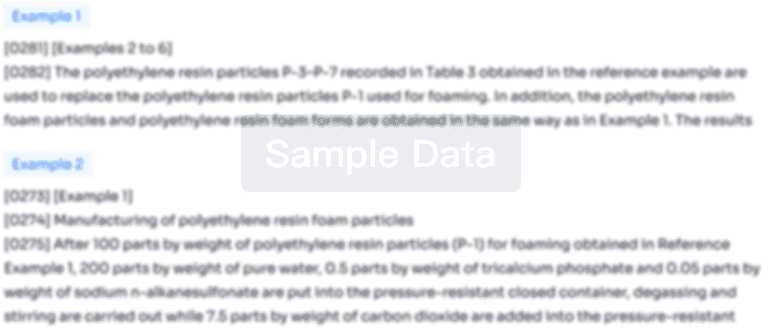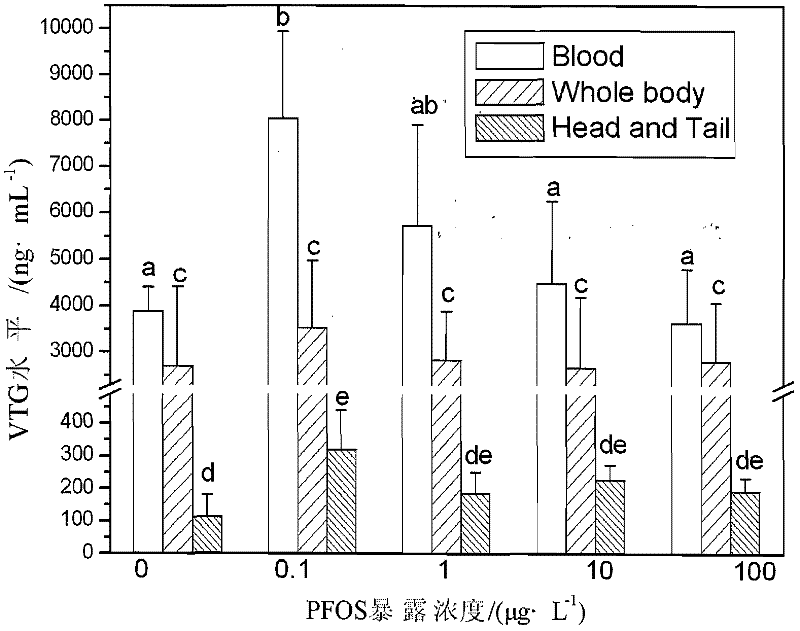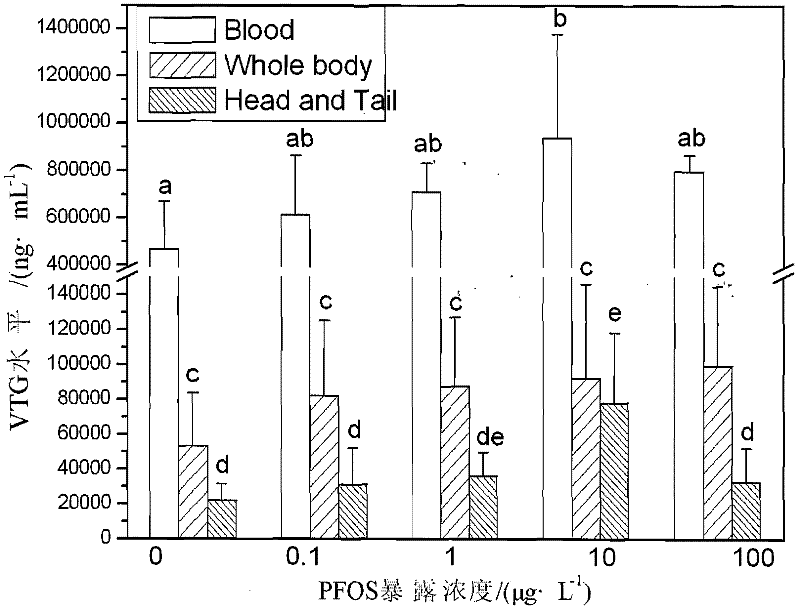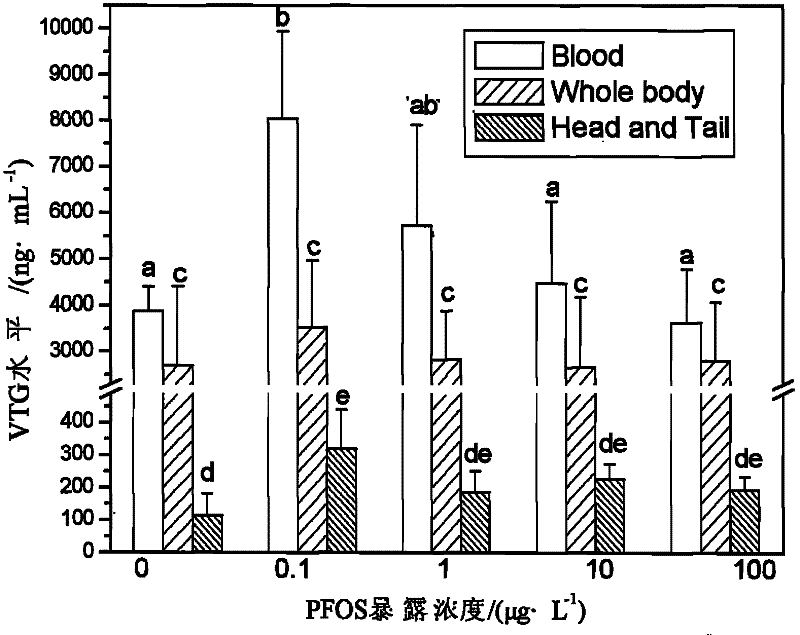Method for regulating and controlling vitellogenin level of zebra fishes
A vitellogenin, aquatic organism technology, applied in the field of evaluating the endocrine toxicity or interference of organic pollutants to aquatic organisms, can solve the problems of poor sensitivity, obvious changes, and low accuracy.
Active Publication Date: 2012-07-18
中检科健(天津)检验检测有限责任公司
View PDF0 Cites 7 Cited by
- Summary
- Abstract
- Description
- Claims
- Application Information
AI Technical Summary
Problems solved by technology
When aquatic organisms are poisoned or polluted by low concentrations of estrogen-like disruptors, neither the external morphological characteristics nor the internal physiological indicators will change significantly; i
Method used
the structure of the environmentally friendly knitted fabric provided by the present invention; figure 2 Flow chart of the yarn wrapping machine for environmentally friendly knitted fabrics and storage devices; image 3 Is the parameter map of the yarn covering machine
View moreImage
Smart Image Click on the blue labels to locate them in the text.
Smart ImageViewing Examples
Examples
Experimental program
Comparison scheme
Effect test
 Login to View More
Login to View More PUM
 Login to View More
Login to View More Abstract
The invention discloses a method for regulating and controlling a vitellogenin level of zebra fishes. The method comprises the steps of: quantifying content of vitellogenin in blood plasma, whole body homogenate or head-tail homogenate of an aquatic organism to be detected; when the content of the vitellogenin in the blood plasma, the whole body homogenate or the head-tail homogenate of the aquatic organism to be detected is higher than the content of the vitellogenin in the blood plasma, the whole body homogenate or the head-tail homogenate of a reference aquatic organism, indicating that the aquatic organism to be detected is poisoned or interfered by a low-concentration estrogen interferent. The method disclosed by the invention has the advantages of being capable of detecting whether the aquatic organism is poisoned or interfered by median- and low-concentration estrogen interferents in an exogenous environment and having important implications for developing relevant scientific research, environment pollutant supervisory control, safety management and the like.
Description
technical field [0001] The invention relates to a method for evaluating the toxicity or interference of organic pollutants to the endocrine of aquatic organisms, in particular to a method for testing whether the endocrine of aquatic organisms is poisoned or interfered by low-concentration estrogen-like disruptors in the exogenous environment, belonging to The field of inspection of estrogen-like disruptors. Background technique [0002] The chemical pollutants in the ecological environment interfere with the endocrine function of humans and wild animals, thereby exerting various effects on individual reproduction, development, and sexual behavior, and even affecting the survival and reproduction of humans (Tilghman S L, Nierth-Simpson E N, Wallace R, et al. Environmental hormones: Multiple pathways for response may lead to multiple disease outcomes [J]. Steroids, 2010, 75(8-9): 520-523). Therefore, international organizations and developed countries implement mandatory mana...
Claims
the structure of the environmentally friendly knitted fabric provided by the present invention; figure 2 Flow chart of the yarn wrapping machine for environmentally friendly knitted fabrics and storage devices; image 3 Is the parameter map of the yarn covering machine
Login to View More Application Information
Patent Timeline
 Login to View More
Login to View More IPC IPC(8): G01N33/48G01N33/53
Inventor 程艳陈会明崔媛谢文平周新于文莲
Owner 中检科健(天津)检验检测有限责任公司
Features
- R&D
- Intellectual Property
- Life Sciences
- Materials
- Tech Scout
Why Patsnap Eureka
- Unparalleled Data Quality
- Higher Quality Content
- 60% Fewer Hallucinations
Social media
Patsnap Eureka Blog
Learn More Browse by: Latest US Patents, China's latest patents, Technical Efficacy Thesaurus, Application Domain, Technology Topic, Popular Technical Reports.
© 2025 PatSnap. All rights reserved.Legal|Privacy policy|Modern Slavery Act Transparency Statement|Sitemap|About US| Contact US: help@patsnap.com



